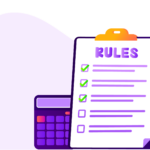Over the last several years, as a result of technology and more industry efficiency, opening a Self-Directed IRA is now easier and more cost-effective than ever. Thanks to new digital investment options, such as cryptocurrencies, fractional real estate, crowdfunding, and private placements, millions of retirement investors are establishing Self-Directed IRA structures with far less money than you would think. So how much do you need to start a Self-Directed IRA account?
- Starting a Self-Directed IRA is easier than ever with the IRA Financial app
- We offer a low annual fee and no hidden charges
- Investment options are available for every budget in today’s marketplace
What is a Self-Directed IRA?
A Self-Directed IRA is essentially an IRA that allows for alternative asset investments, typically assets you cannot invest in with a regular IRA. Since the creation of IRAs in 1974, the Internal Revenue Code does not prohibit IRAs from investing in alternative assets. However, just because an investment is allowed, doesn’t mean it is offered by your IRA custodian.
The only investments you cannot make are life insurance, collectibles, and a transaction involving a disqualified person. But since you don’t have the freedom to invest with a regular financial institution, you must look for the right Self-Directed IRA provider, such as IRA Financial.
How Much do I Need to Start a Self-Directed IRA?
With IRA Financial, you can set up a Self-Directed IRA for one low flat annual fee. The annual custodian fee is just $460 for any IRA, HSA, or Coverdell account. There are no asset valuation or management, transaction, wire or check fees. In other words, all you need is $460 to open a Self-Directed IRA with IRA Financial. The fee is only due once your IRA account is funded. You can get started for free on our app. Plus, the annual custodian fee can be paid with IRA funds or via credit card.
Our average Self-Directed IRA account balance is approximately $135,000. However, over the last few years, we have seen a significant number of investors opening Self-Directed IRAs with as little as $1,000. There are investments around to fit anyone’s budget. As your balance increases, the world of investment opportunities is opened to you.
Why Should You Set Up a Self-Directed IRA?
The primary advantage of a Self-Directed IRA is that one can use retirement funds to better diversify his or her retirement portfolio, as well as invest in an asset you better understand. A mounting number of IRA owners are concerned with the fact that most of their personal and retirement savings are tied into equities, such as stocks, and want the opportunity to diversify into other asset classes.
Of course, the tax advantages of the plan are numerous. All assets, both traditional and alternative, held inside an IRA are not taxable. Taxes are deferred until you withdraw from the plan. Alternatively, if you have a Roth IRA, all qualified distributions are tax-free at retirement.
How to Fund a Self-Directed IRA
There are three primary ways to establish and fund a Self-Directed IRA: (i) contributions, (ii) transfers, and (iii) rollovers. Depending on your situation, you may able to choose one, or multiple options.
Contributions
In 2024, one can contribute up to $7,000, plus an additional $1,000 if you are at least age 50 to a Self-Directed IRA. One must have sufficient earned income to be eligible to make contributions. Passive income, such as capital gains or rental income, are not treated as earned income and cannot be considered for contributions.
Traditional, or pretax, IRAs are funded with, you guessed it, pretax money. For most people, the money contributed to the plan are not treated as taxable income. However, if you earn too much during the year, you will not receive that deduction.
On the other hand, Roth IRAs are funded with after-tax money. There is no immediate tax benefit, but as we mentioned earlier, distributions are tax free. In order to receive tax-free Roth funds, you must be at least 59 1/2 years of age and have any Roth opened for at least five years.
Transfers
A transfer is essentially moving funds from one type of plan to the same type (like IRA to IRA). One can transfer fund or assets, such as stocks or real estate, from an IRA to a Self-Directed IRA anytime without limitations. IRA to IRA transfers are tax-free and can be done anytime.
However, an indirect transfer, where IRA funds are first transferred to the IRA holder before being re-transferred to a Self-Directed IRA can only occur once every twelve months. In addition, the IRA owner has only 60 days to use the funds before they must be returned to a retirement plan. Any funds not moved into a plan are treated as a taxable distribution.
Rollovers
The Self-Directed IRA rollover rules are very similar to the IRA transfer rules. The main difference between an IRA transfer and a rollover is that a rollover is between and IRA and non-IRA retirement account, such as a 401(k) plan.
Keep in mind, you can only roll over “old” retirement funds. Plan funds you have at a current job generally need a triggering event to be moved. The most popular ones are reaching the age of 59 1/2, separating from your employer, or if the plan gets terminated. Once one of these events happens, you are free to move your funds wherever you want, including rolling them over to a Self-Directed IRA.
Starting a Self-Directed IRA
Setting up a Self-Directed IRA is now easier than ever with the use of the IRA Financial app. No longer do you need to visit a bank or other financial institution. You can now do it right from your smart device or personal computer.

How Long Does it Take to Open an Account?
After logging into the app, you start the process of opening the account.
- The application will go into a queue to be reviewed. A new account specialist will call you within 3-5 business days if items are missing, filled out incorrectly, or need further follow-up.
- Once the application is complete and correct, an account number will be assigned within an additional 3-5 business days. The account number will be emailed to you by [email protected].
- The transfer form will be submitted to the Transfer Department, or instructions to complete a rollover or contribution will be emailed to you with your account number.
- Once we receive the funds they will be ready for investing.
- An investment authorization form is to be completed and required investment documentation must be provided/uploaded so that IRA Financial can fund the investment.
Conclusion
Starting a Self-Directed IRA with IRA Financial is now simpler and more cost effective than ever. Our industry leading app makes opening an account super quick and easy. The ability to gain investment diversification and generate tax-advantaged gains is the primary reason the Self-Directed IRA has become so popular with retirement savers. Our flat annual fee model allows you to invest with the confidence that as your account goes up in value, you will still pay the same annual fee. Plus, with no hidden fees, investing is efficient and worthwhile.







